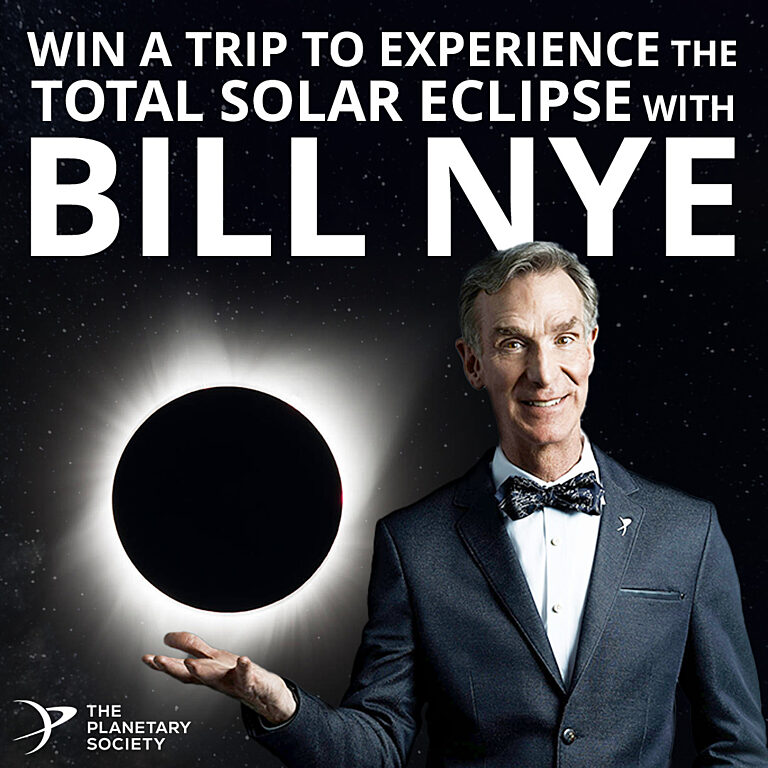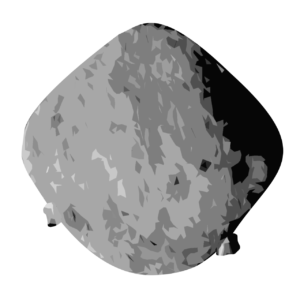The Downlink • Nov 10, 2023
Planetary paparazzi
Space Snapshot

NASA’s Lucy spacecraft passed the main belt asteroid Dinkinesh on Wednesday, Nov. 1, 2023, en route to the Jupiter Trojan asteroids. As it flew by, Lucy observed what appeared to be a tiny asteroid moonlet in orbit around Dinkinesh. Further imaging revealed something even more surprising: a binary pair of moonlets close enough to touch one another. Image credit: NASA / Goddard / SwRI / Johns Hopkins APL.
You love space, now take action
This weekly newsletter is your toolkit to learn more about space, share information with your friends and family, and take direct action to support exploration. Anyone can subscribe at planetary.org/connect to receive it as a weekly email.
Mission Briefings


A new NASA app will help you snap pics of the International Space Station. The Spot the Station app uses an augmented reality interface to show you where the station is at any given time, even if it’s on the other side of the planet. It also gives users options for capturing and sharing pictures and videos of their sightings in real-time. The app’s code is open source for anyone to access, modify, and use in their own projects and to provide optional feedback to the developers. Pictured: Planetary Society member Christopher Becke captured a sequence of images of the International Space Station passing in front of the Moon and combined them into this breathtaking image. Image credit: Christopher Becke.

NASA has delayed the development of an Artemis lunar rover. The agency is delaying the award of contracts to develop a lunar rover for future Artemis missions by four months to allow additional time to evaluate proposals, raising concerns in the industry about the future of the program. Aerospace industry officials have speculated that the delay may be linked to uncertainty about NASA’s budget in fiscal year 2024.

Citizen scientists are working to build Martian cloud maps. Participants in Cloudspotting on Mars, a NASA citizen science project, have been using data collected by the Mars Reconnaissance Orbiter to map the clouds over the Martian landscape. The project involves identifying the times at which clouds were spotted and the regions in the Martian atmosphere where they were found.

Thomas Ken Mattingly II, an American spaceflight hero, has died. The NASA astronaut served as command module pilot for Apollo 16 and spacecraft commander for space shuttle missions STS-4 and STS 51-C. Perhaps his most dramatic role was as ground support for the Apollo 13 mission, helping bring home the astronauts aboard the damaged spacecraft. He passed away on Oct. 31 at the age of 87.
From The Planetary Society


Uranus and Neptune are a little camera shy. Compared to other worlds in our Solar System, there aren't many close-up, high-resolution images of the ice giants Uranus and Neptune. Learn why we don’t have more photos of Uranus and Neptune, find out more about the images we do have (like these ones captured by Voyager 2 in the 1980’s), and discover what might be done to better explore these planets in the future. Image credit: NASA / JPL-Caltech / Björn Jónsson.

Mars is no stranger to the planetary paparazzi. It is one of the best-explored planets other than our own, and has had countless photos taken of it. We’ve collected our favorite images of the red planet taken from space — setting aside all the amazing photos taken by rovers and landers. From views of the entire planet to zoomed-in shots of beautiful surface features, there’s so much Mars to behold.
If you love planetary portraits, be sure to pick your favorite! Vote in The Planetary Society’s Best of 2023 awards to pick your favorite space images, mission milestones, space art, and more from the past year. Voting is open until Nov. 30, and we’ll announce the winners in early December.

We’ve got photos of Mars, but what about those samples? NASA’s Mars Sample Return has been facing problems lately, growing in its expected cost and lagging behind schedule. The latest episode of Planetary Radio: Space Policy Edition welcomes Orlando Figueroa, who chaired an independent review board that recently evaluated this project and identified factors contributing to its difficulties. Looking even farther into the future, this week’s episode of Planetary Radio speaks with Kelly and Zach Weinersmith, authors of "A City on Mars: Can We Settle Space, Should We Settle Space, and Have We Really Thought This Through?" to talk about the challenges humanity might face as we build habitats beyond Earth.

Momentum continues to build for VERITAS. The Geological Society of America (GSA), renowned for its pivotal role in planetary science and geology, has officially signed on to a letter with The Planetary Society, the American Geophysical Union, and leading academic institutions supporting the VERITAS mission to Venus. VERITAS would provide unparalleled views of the Venusian surface, unlocking the secrets hidden beneath the thick clouds obscuring Earth's closest planetary neighbor. With members in over 100 countries, GSA's backing sends a powerful message to Congress and NASA: launch VERITAS by November 2029! Your voice matters too. Take action now to support VERITAS and a balanced planetary exploration program.
What's Up

Jupiter shines very bright, rising in the east around sunset and setting in the west around sunrise. Yellowish Saturn is also high up in the evening sky, above Fomalhaut, the only bright star in its region of the sky. Look for super bright Venus in the east before dawn. The Leonid meteor shower peaks next week between Nov. 17 and 18. Learn more about everything happening in November’s night skies.
Watch a total solar eclipse with Bill Nye!

You could win a trip to experience the April 8, 2024, total solar eclipse as a guest of CEO Bill Nye at The Planetary Society's Eclipse-O-Rama 2024 event!
This super stellar experience will include an invitation to watch the eclipse with Bill, VIP access to all things Eclipse-O-Rama 2024, exclusive talks on astronomy and planetary science, exhibits, and star parties. Plus, we’ll cover your airfare and accommodations. Your entry supports The Planetary Society's mission to advance discovery in our Solar System and beyond.
Wow of the Week

This candid photo of Planetary Society co-founder Carl Sagan was taken as he studied his lines before shooting a scene in his iconic television series, “Cosmos: A Personal Voyage.” It’s among a selection of newly rediscovered photos from The Planetary Society’s archives that we shared in honor of the late Sagan’s birthday on Nov. 9. Image credit: NASA/JPL.
Send us your artwork!
We love to feature space artwork in the Downlink. If you create any kind of space-related art, we invite you to send it to us by replying to any Downlink email or writing to [email protected]. Please let us know in your email if you’re a Planetary Society member!


 Explore Worlds
Explore Worlds Find Life
Find Life Defend Earth
Defend Earth


